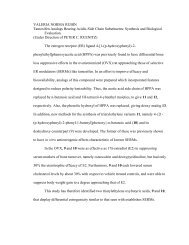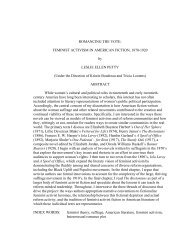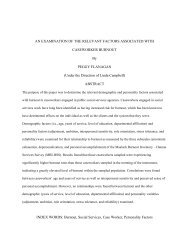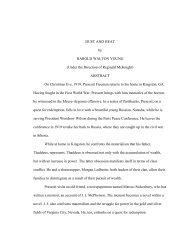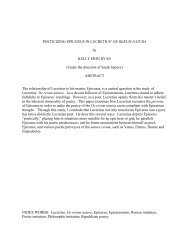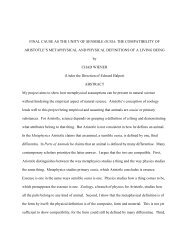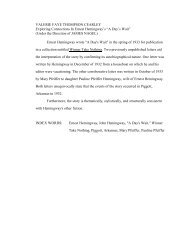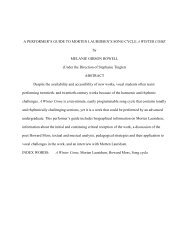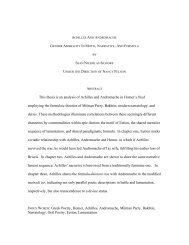exploring a popular culture body modification - Athenaeum Home ...
exploring a popular culture body modification - Athenaeum Home ...
exploring a popular culture body modification - Athenaeum Home ...
Create successful ePaper yourself
Turn your PDF publications into a flip-book with our unique Google optimized e-Paper software.
CHAPTER 1<br />
INTRODUCTION<br />
Hair holds an uncomfortable position in the spectrum of what is considered natural and<br />
what is considered unnatural (Barcan, 2004). It is viewed as natural because as humans we are<br />
born with it and associate it with particular growth periods throughout our lives, such as<br />
reproductive maturity and aging. Paradoxically, it can also be seen as a <strong>body</strong> supplement or<br />
garment, something used to decorate the <strong>body</strong> that can be removed or altered. These two<br />
opposing views lay the grounds for a wide variety of cultural perspectives on hair and how it<br />
should be understood. Different <strong>culture</strong>s throughout history have used constructed knowledge,<br />
social standards, and aesthetic preferences to determine how to manipulate and treat each type of<br />
hair on a person‟s <strong>body</strong>, including pubic hair. Understanding the complex reasoning for<br />
manipulations of pubic hair can contribute to the understanding of cultural perspectives<br />
regarding gender, media, history, sex, and dress. Researching the path of an individual‟s bodily<br />
experience within a particular <strong>culture</strong> can shed light on the complexities in which a <strong>culture</strong><br />
defines ideals of what is masculine or feminine, or a fading line between the two. This<br />
understanding of gender is closely related to the historically changing observance of women as<br />
erotic stimuli, a topic that is built upon <strong>culture</strong>, more importantly, a <strong>culture</strong>‟s media and the<br />
messages they send. Today, these messages impel women to gain femininity and/or erotic<br />
appeal by accommodating the fashion of removing the pubic hair.<br />
Depilation and/or trimming of pubic hair is a highly normative practice, which is<br />
increasingly being used by contemporary western <strong>culture</strong>s (Toerien, Wilkinson & Choi, 2005).<br />
With the advent of the Second Wave Feminist Movement and the growing trend of exhibitionism<br />
that became apparent in erotic performance and motion pictures beginning in the 1960s, sex has<br />
1





